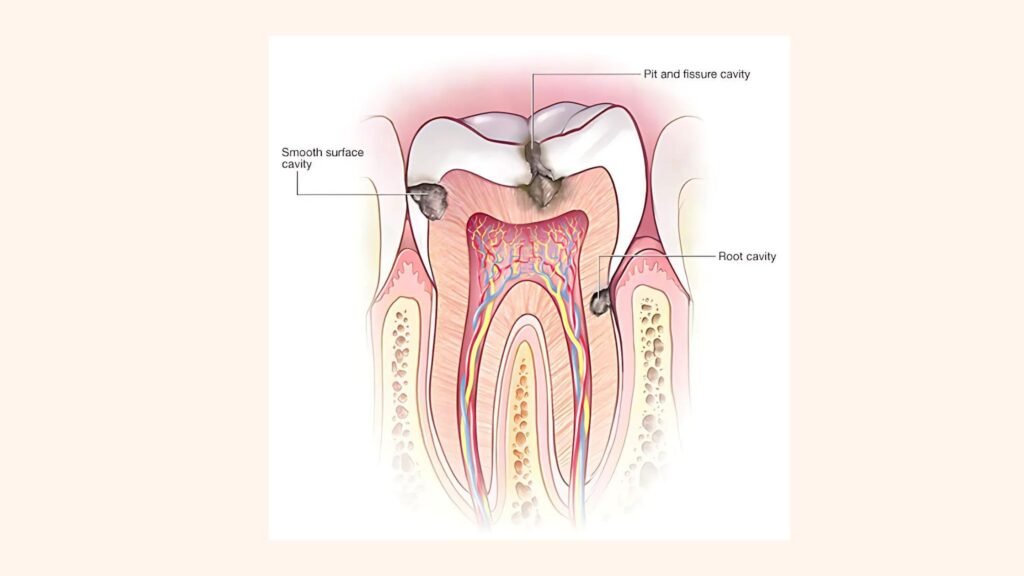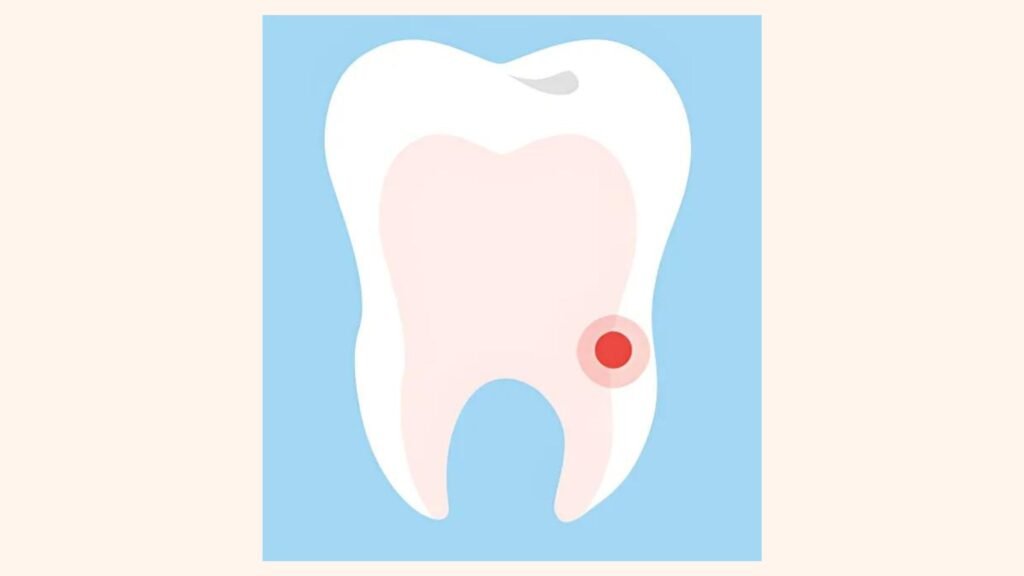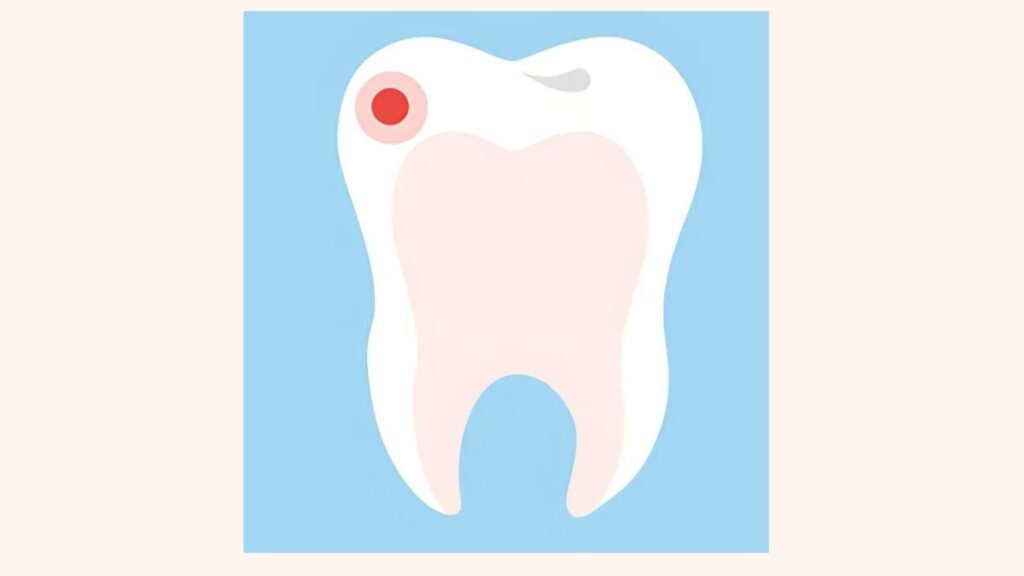
24 Sep What Does a Cavity Look Like? Recognizing the Signs Stages and Solutions
Cavities, or tooth decay as some call them, aren’t just a dental problem; in fact, they show how well we’re taking care of our teeth. Moreover, if we catch cavities early, it can really help with treatment and, ultimately, keep our mouths healthy. But have you ever thought about what a cavity actually looks like? If you are curious, then this blog is here to help you learn what a cavity looks like. In addition, we will help you catch them before they turn into bigger issues. So let’s get started.
What Does Cavity Look Like?
At first, a cavity might show up as white, brown, or black spots on the tooth. Secondly, if it keeps getting worse, cavities can turn into actual holes. If you don’t take care of it, the decay can go deeper into the tooth and get close to the nerve.
So basically, cavities often show up as little spots on the enamel; however, as they get worse, they can darken and become way more obvious. However, surprisingly, these spots appear the same on tooth but in reality they differ depending on the tooth where they are. Let’s explore different types of cavities.
3 Different Types of Cavity

So, depending on where cavities pop up on your teeth, there are, in fact, three types. Consequently, knowing what a cavity looks like at different spots can make it easier for you to spot them.
Root cavities pop up on the surfaces of tooth roots. In fact, you’ll find these more often in older folks, especially if they have receding gums. Moreover, when gums pull back, they leave the tooth roots open to harmful acids from food, bacteria, and decay. Consequently, spotting root cavities early is super important because they can get worse pretty quickly. Furthermore, there are different treatment options available based on how bad the decay is.

Cavities usually appear on the chewing surface of the back molar teeth. Moreover, it’s super easy for plaque and food to get stuck in those tight grooves, which is why they’re pretty common. For this reason, using sealants can give teeth a solid layer of protection, whether it’s for kids or adults who are at risk. Furthermore, catching pit and fissure cavities early is key to avoiding bigger problems later on. In addition, keeping up with good dental hygiene is really important in stopping these cavities from forming.

Smooth-surface cavities are those pesky little issues that show up on the flat surfaces of your teeth, mainly on the sides of your mouth. In fact, they’re pretty slow to form and aren’t as common as other types. However, if you ignore your dental hygiene, they can definitely cause some trouble. Moreover, a lot of times, these cavities sneak up on you and you won’t even notice them until they get pretty serious. Therefore, sticking to a solid oral care routine can really help you lower the chances of getting smooth-surface cavities.

5 Stages Of Cavity Formation
Most of the time, you only notice a cavity when it starts hurting. However, if you know the stages of cavity development, it’s way easier to catch and fix it earlier.
- Stage One: White Spots
During the first stage of tooth decay, you might notice some white spots on your teeth. Now these spots suggest something vital—that your tooth is losing minerals.
- Stage Two: Enamel Decay
Next up, in the second stage, the tooth’s outer layer, known as enamel, starts to wear away.
- Stage Three: Dentin Decay
If the decay keeps going, it can hit the layer under the enamel called dentin. Subsequently, you might even start feeling some pain at this point.
- Stage Four: Pulp Involvement
Next, when the cavity hits the pulp (the inside of the tooth), it can be super painful. Therefore, you’ll need to get treated right away, usually with a root canal or even pulling the tooth.
- Stage Five: Abscess Formation
When it gets to the last stage, the infection can move to the area near the tooth and, furthermore, even spread to your nerves.
How to Identify a Cavity in Your Tooth?
Cavities can be tricky little things. They often don’t hurt until they hit nerves; therefore, it is super important to spot their symptoms early. Here’s how you can keep an eye on cavities in your teeth before they get worse.
- Toothache and Sensitivity: You might start feeling some discomfort as the decay gets worse. If you notice sensitivity to hot, cold, or sweet stuff, then that could be a warning sign.
- Discolored Spots: Furthermore, keep an eye out for white spots that are changing to brown or black. Spotting these changes early could get you to the dentist sooner.
- Holes in Tooth: In addition, at advanced stages, cavities might show up as big, noticeable holes. These can really hurt and lead to bigger dental problems down the road.
- Swollen Gums: Moreover, your gums could look red or feel raw, and you might notice some bleeding. This could also mean gum disease, which is often connected with cavities.
- Bad Breath: Lastly, if you’ve got persistent bad breath, even after you brush, that could be a clue that there’s a cavity lurking. Bad breath often means bacteria are having a feast on food particles in your mouth.
7 Main Causes of Cavities
Now that we know what a cavity looks like it is time to see the reason behind it. Now a cavity can pop up due to a mix of the following things:.
- Bacteria: First, the bacteria in your mouth create acids when they munch on sugars and starches from your food and drinks.
- Frequent Snacking: Additionally, snacking a lot, especially on sugary stuff, can lead to more acid production.
- Poor Dental Hygiene: Moreover, not brushing well or missing those dental check-ups can really ramp up the chances of getting cavities.
- Smoking and Tobacco Use: Furthermore, using tobacco can dry out your mouth and lead to gum disease, both of which boost the risk of decay.
- Inadequate Fluoride: In addition, skipping fluoride toothpaste or not drinking fluoridated water can limit the protection for your enamel.
- Dry Mouth: Also, things that lower your saliva production, like certain medications or health problems, can crank up your risk of decay since saliva helps offset acids.
- Skipping Dental Check-Ups: Finally, forgetting about regular visits to the dentist can lead to hidden cavities and other dental issues.
Reasons Why Your Cavity Needs Early Treatment
Understanding what a cavity looks like on a tooth is super important. In the same way, it’s also critical to know what happens if you don’t get it treated. Here are a few reasons why your cavity needs early treatment.
- First ignoring cavities can cause some serious problems, like losing teeth, getting infections, and even affecting your overall health.
- Moreover, delaying treatment usually means you’ll end up needing complicated procedures that cost more.
- In addition, neglecting your oral health for a long time can affect your teeth; it can harm your overall health too.
Ultimately, taking action early can help keep your smile intact and save you cash down the road!
When Should You Visit A Dentist?
Keep an eye out for these signs that it might be time to reach out the dentist:
- Visible Cavities: Firstly If you see any weird discoloration or holes, it’s time to book that appointment. Additionally, notice anything off about your teeth? Don’t wait; give your dentist a ring.
- Persistent Pain: If you’ve got pain that just won’t quit, it could mean a cavity is on the way. Consequently, ignoring that ache might just lead to worse problems in the future.
How To Treat A Cavity?
So, how does a dentist deal with your cavity? As we’ve seen, there are three types of cavities, and each one needs a different approach.
- Root Cavity Treatment: To take care of root cavities, dentists will zap that decay out and fill the hole. However, if it goes deeper and hits the pulp, you might need a root canal. Therefore, getting on it early is super important, because decay can spread fast in those spots. In really bad cases, they might suggest a crown.
- Pit and Fissure Cavity Treatment: If you catch these early, they can usually be handled with sealants or fluoride. However, if they get deeper, the dentist will need to dig out the decay and fix it up with fillings. In some cases, this may involve root canals or crowns.
- Smooth-Surface Cavity Treatment: Conversely, these cavities tend to grow slowly, making them easier to handle. Typically, fluoride treatments often do the trick; however, if they progress too much, you might need fillings.
Wrapping Up
Hopefully this blog helped you learn about what a cavity looks like and how to deal with them. Therefore, keep up with your oral health every day, and don’t forget to book your regular check-ups. In addition, your dentists have different ways, such as visual exams and X-rays, to spot cavities before they get worse. Ultimately, regular visits are your best way to fight against cavities.
FAQ
- Can you just brush away a cavity?
Nope, brushing alone won’t get rid of a cavity. Once it’s fully formed, you need to see a pro for treatment.
- Does filling a cavity hurt?
Not really! Dentists usually numb the area to help keep any pain in check during the procedure.
- How long does it take for a cavity to wreck a tooth?
There’s no exact timeline; it all depends on how bad the cavity is and the health of the tooth.

No Comments